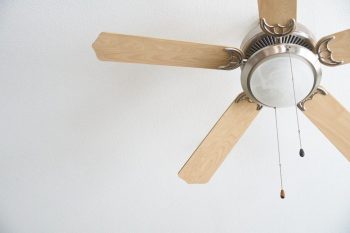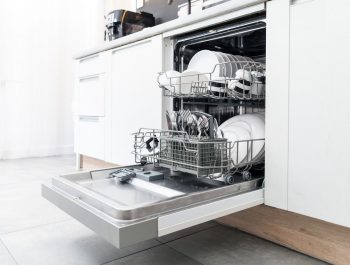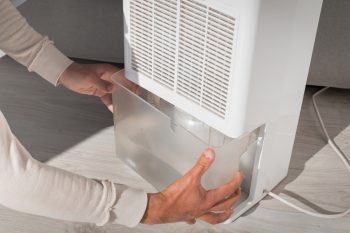
In the world of home appliances, ceiling fans continue to be a popular choice for many homeowners. Not only are they energy-efficient, but they also provide a cost-effective way to cool or heat a room. The most common way of operating a ceiling fan is through a pull switch, also known as a pull-cord or pull chain switch. But how exactly does this simple yet ingenious device work? In this comprehensive guide, we’ll delve into the mechanics of a ceiling fan pull switch and provide you with everything you need to know about this essential component.
A ceiling fan pull switch works by controlling the electrical circuit that powers the fan or light. The pull chain attached to the switch activates a mechanism inside the switch that makes or breaks the circuit, allowing the fan or light to operate. When the chain is pulled, it rotates a switch inside the fan housing, which in turn changes the electrical connections and controls the fan’s operation. The switch can have multiple positions, allowing for different fan speeds or levels of illumination if the fan has a light attached to it.
What is a Ceiling Fan Pull Switch?
A ceiling fan pull switch is a mechanism that controls the operation of a ceiling fan. It’s typically actuated by a chain or string, hence the term ‘pull switch.’ The primary function of a pull switch is to turn the ceiling fan on and off and adjust its speed. Ceiling fans with lights may have a separate pull chain for the light switch.
There are two main types of pull chain switches: toggle switches and multi-position switches. Toggle switches change state (off or on) with each pull of the chain, while multi-position switches cycle through several states with each pull, allowing for different fan speeds or levels of illumination.
How Does a Ceiling Fan Pull Switch Work?
A ceiling fan pull switch works by controlling the electrical circuit that powers the fan or light. The pull chain attached to the switch activates a mechanism inside the switch that makes or breaks the circuit, allowing the fan or light to operate.
When the chain is pulled, it rotates a switch inside the fan housing, which in turn changes the electrical connections and controls the fan’s operation. The switch can have multiple positions, allowing for different fan speeds or levels of illumination if the fan has a light attached to it.
Components of a Ceiling Fan Pull Switch
The main components of a ceiling fan pull switch include:
- Pull chain: The visible part of the switch that users pull to control the fan speed or light.
- Switch housing: A cup attached to the bottom of the motor that contains the key components of the pull switch.
- Speed control: The pull switch typically has three speed settings (high, medium, and low) for controlling the fan speed.
- Wiring: The pull switch is connected to the fan motor and light (if applicable) through a series of wires.
Troubleshooting a Ceiling Fan Pull Switch
Like any other mechanical device, a ceiling fan pull switch may encounter issues such as a stuck or jammed pull chain, a broken pull chain, or a faulty pull chain switch. To troubleshoot these issues:
- Clean the pull chain assembly: If the chain is stuck or jammed, it might be due to dirt, dust, or debris buildup inside the assembly.
- Replace the pull chain: If it’s broken or completely detached, you’ll need to replace it.
- Replace the pull chain switch: If the switch is loose, damaged, or worn out, it will need to be replaced.
Replacing a Broken Ceiling Fan Pull Switch
If your pull switch is broken, you can replace it by following these steps:
- Turn off the power: Before starting, always turn off the power at the circuit breaker to avoid any electrical hazards.
- Remove the fan cover: Unscrew and remove the fan cover to access the pull switch.
- Take note of the wiring: Write down the colors of each wire and which terminals they connect to before detaching them.
- Remove the old switch: Unscrew the switch plate cover and set it aside.
- Purchase a new switch: Make sure to get a new switch that matches the old one in size, number of speeds, and wattage.
- Attach the new switch: Connect the colored wires to the appropriate terminals on the new switch.
- Reassemble the fan: Once the new pull switch is installed, reattach the fan cover and secure it with screws.
- Restore power and test: Finally, turn the power back on and test the fan to ensure it’s functioning correctly.
In Conclusion
A ceiling fan pull switch, while small and seemingly insignificant, plays a crucial role in the operation of a ceiling fan. Understanding how it works and how to troubleshoot common issues can save you time and money, and keep your fan running smoothly. Whether you’re a homeowner looking to repair a broken fan, or just someone curious about how things work, we hope this guide has been helpful in shedding light on the inner workings of a ceiling fan pull switch.
Frequently Asked Questions
What tools do I need to replace a ceiling fan pull switch?
To replace a ceiling fan pull switch, you’ll typically need a Phillips screwdriver for removing the fan cover and switch plate cover, a pen and paper for noting down the wiring connections, and a new pull switch that matches your old one.
Can I use a ceiling fan pull switch on any type of ceiling fan?
Most ceiling fan pull switches are universal and can be used on any type of ceiling fan. However, it’s always best to check the manufacturer’s recommendations before purchasing a new switch.
Is it safe to replace a ceiling fan pull switch myself?
Yes, it’s generally safe to replace a ceiling fan pull switch yourself, as long as you take the necessary precautions. Always turn off the power at the circuit breaker before starting, and make sure to follow the manufacturer’s instructions.
How long should a ceiling fan pull switch last?
The lifespan of a ceiling fan pull switch can vary depending on the quality of the switch and how often it’s used. However, a good quality pull switch should last for several years with regular use.
Can I replace a multi-position pull switch with a toggle switch?
While it’s technically possible to replace a multi-position pull switch with a toggle switch, it’s not recommended. A toggle switch will only provide on-off functionality, and you’ll lose the ability to control the fan speed.












